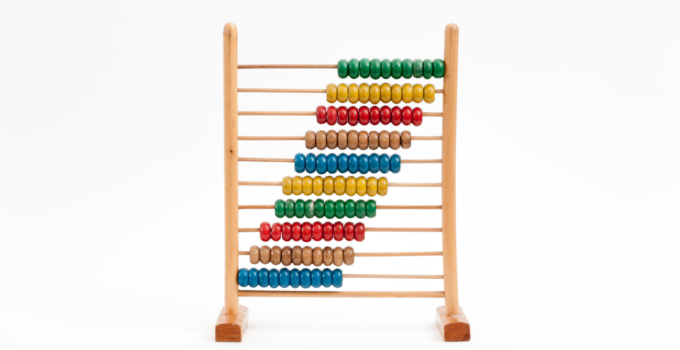Fun fact: I spent about four years of my life thinking I would be an accountant. I took three classes in high school, went to accounting camp, and chose my college with the aim of concentrating in accounting. So the concept of a personal balance sheet speaks to a core part of my being.
Through an accounting internship in college, I learned that I need more creativity in my career to be satisfied. But I still like accounting for the reasons I fell in love with it at 15. (Yes, I was a bizarre child. I think I turned out ok.) I love the way it brings structure and organization to finances. So let’s talk about how we can bring some of that structure to personal finances.
What is a Balance Sheet?
In accounting, a balance sheet is a snapshot of a business’s finances. It lists all the cash and holdings of value as well as the amount of money that it might owe.
Generally speaking, a balance sheet is organized according to the accounting equation:
Assets = Liabilities + Equities
Assets are the stuff that a business has – money, equipment, land, etc.
Liabilites are what the business owes – outstanding loans, unpaid employee salaries, unpaid bills, etc. Note that these are usually expressed as a negative number.
Equities are a little more abstract.
Equity is the difference in value between assets and any liabilities attached to them. Essentially, equity is the amount of money a business would have if they closed up shop – sold all their assets and paid off their liabilities. Equity is what’s left.
Ok, but you probably didn’t come here for a lesson in accounting (though I’ll happily continue with Intro to Accounting, if anyone is interested*). So let’s see how we can build a personal balance sheet.
What Belongs on a Personal Balance Sheet
Let’s go back to that original equation and see if we can update the terms to make sense on a personal level.
Assets = Liabilities + Equities
Assets still makes sense – it’s the right word to describe the money and goods that someone might own.
Liabilities…well, none of you pay for groceries on account that gets billed monthly, right? That’s just the stuff of Little Women and not really a part of modern life. And you aren’t anticipating having to pay anyone’s paycheck in two weeks, right? Cool, so let’s call this one Debt instead.
Now for Equities. This is that would happen if you sold all your assets and paid off your debt. This is your Net Worth!
So here’s our updated equation:
Assets = Debt + Net Worth
Ok, so I basically just used a fancy accounting term to get us to discussing net worth. But thinking about your net worth calculation as a personal balance sheet gives me a good opportunity to drop a couple mindset suggestions into your lap. I’ll get to that at the end.
How to Build a Personal Balance Sheet
I personally use the Mad Fientist’s Financial Independence Spreadsheet and I have a post that explains what financial independence is and what it means to me.
Here’s another example, but this one annoys me because you need to print it out… I’m an Excel lady (Google Sheets can sit at my table too, I guess), so I would recreate this as a spreadsheet to use it.
But the process of building a personal balance sheet is relatively straightforward. Simply collect all the numbers and calculate out your net worth!
Some things to keep in mind as you build this:
#1 Remember all of your assets – but don’t overstate them
Technically, an asset is anything that has monetary worth. So make sure you collect your bank account values and any savings accounts or investments (and if you have a significant amount of gift cards, that might be worth tabulating? I personally ignore those). But don’t forget about physical assets that might be worth something – cars, houses, etc.
But be careful not to overstate the value of these things. While you might have some nice jewelry, you would be hard-pressed to get a significant cash payout for it. If it’s insured, the insured value is NOT the balance sheet value – that’s how much the insurance company would pay for you to replace it. But time and again, we hear stories about people trying to sell their engagement ring, only to find that they can only get the value of the gold in the band.
I’d highly recommend only listing things you could actually sell – a house or a car, but not electronics or jewelry.
#2 A Personal Balance Sheet is a snapshot in time
When you build your personal balance sheet, it’s going to have all of your up-to-date balances. But it becomes inaccurate very quickly. When you get paid, or pay off your credit card, your asset and liability numbers are going to be wrong. So if this is something that you want to track, commit to doing it routinely. Find a reasonable timeframe for you – a month, a quarter, biannually – and refresh it then!
#3 There are two ways of increasing Net Worth
What I especially like about the way the accounting equation applies to normal life is that it highlights the two ways to increase your net worth!
I think most people immediately jump to paying off their debt as the first step to increasing their net worth. But there are plenty of scenarios where increasing your assets are going to be an appropriate way of driving your net worth up. Often, people do both in tandem! Interest rates, emergency funds, and long-term savings goals all factor into the decision, but don’t think that you ABSOLUTELY HAVE TO get through that mountain of student debt before you have a sizeable net worth.
#4 Your Net Worth is NOT your personal worth
I want to close with a perspective check. Building your net worth is a great goal to have. I was INCREDIBLY excited when I hit zero net worth, and building to that was a fun game when longer-term goals (ahem, student loans) seemed too far away to be enticing.
But your net worth is simply a measure of your monetary value to our capitalist system if you ceased to be, right now. Which I know sounds extreme, but I really want to emphasize that you, personally, have worth to yourself and the people around you even if your financial net worth is low, zero, or negative.
A personal balance sheet should be an awareness tool for you – a way to set goals and track your progress. And if it becomes a disheartening practice, maybe try updating it less often.
When used properly, a personal balance sheet can give a clear picture of your current financial status.
*Preview of content in Katherine’s Fun Accounting Class: the accounting equation is why debit cards and credit cards have their names! In accounting, everything to the left of the equal sign (assets) are classified as debits in bookkeeping, and everything to the right of the equal sign (liabilities, equities) are classified as credits. So when you use a debit card, you’re pulling from your assets (cash in the bank), but when you use a credit card, you’re creating a liability that you will pay later!





No Responses